
An ancient seabed emerges from a cleaned limestone slab © The Trustees of the Natural History Museum, London
undefinedHuge Jurassic seabed uncovered in Cotswolds quarry
Beth Askham
First published 21 July 2021
Palaeontologists have uncovered thousands of perfectly preserved Jurassic fossils in a sleepy area of the Cotswolds. They could give us unparalleled insights into ancient life.
Join Museum scientists on their fossil hunt.
It's the mid Jurassic, and you're standing next to an estuary running into a warm, shallow sea. Sea life is flourishing. Dinosaurs roam the islands around you, including the herbivore cetiosaurus (whale lizard) and the carnivore megalosaurus (big lizard). Conifer plants dominate.
Looking into the water, you notice the sea floor is thick with animals. Starfish, sea urchins and sea cucumbers move around the feathery arms of sea lilies and feather stars, which sway gently in the current. Some are looking for food drifting through the moving water, others are searching for food in the seafloor sediment or looking to capture other creatures.
It might have been a peaceful scene, but we know that peace was interrupted by a catastrophic event. An event so sudden and dramatic that it smothered everything on the sea floor in a thick layer of mud.
Trapped in the mud, these animals were lost to time, until some 167.1 million years later, when the entire seabed - beautifully preserved as it was in life tens of millions of years ago - was uncovered in a quarry in the north Cotswolds.
Museum researchers have now joined local experts to excavate the quarry. They are uncovering an extraordinary number of fossils from its muddy depths.
These precious specimens can help tell us about marine life in the mid Jurassic and the evolution of these creatures.
Dr Tim Ewin, Senior Curator at the Museum, says, 'What we're finding at this site are the most beautifully preserved fossil sea urchins, starfish, sea lilies and feather stars that I have ever seen from Britain. It's comparable to some of the best fossil sea urchin and starfish sites in the world'.
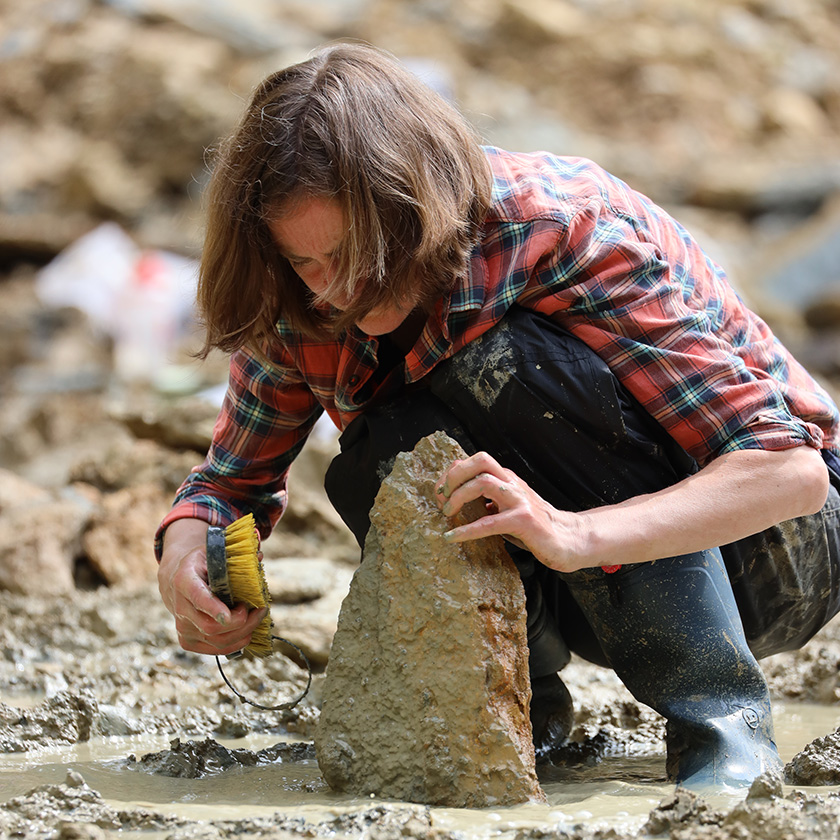
Dr Lil Stevens, Collections Task Force Manager at the Museum, working at the quarry. She is scrubbing mud away from limestone in the hope of finding treasure inside.
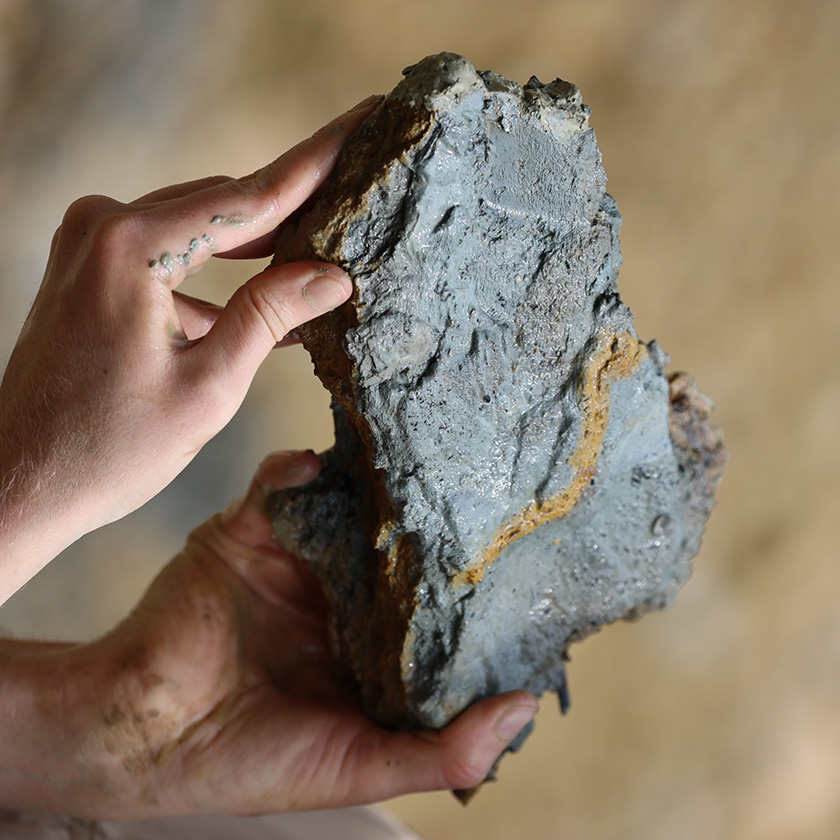
A limestone slab that was pulled from the quarry. The rock will need to be gently scraped back to reveal the fossils within.
What makes this seabed so special?
Tim and other Museum staff have been uncovering this lost world. The team are finding an incredible number of rare fossils in the quarry, including over 1,000 fossil crinoids.
Crinoids are marine animals that include feather stars and sea lilies. Their fossils are rare because the soft tissues that hold their skeletal plates together disintegrate quickly after death and hardly ever become fossilised.
In this quarry however, the researchers have found many crinoid fossils with their whole body preserved.
To put this into perspective, before these fossils were found, there were only 25 incomplete fossil feather star specimens in the 200-year-old Museum collection.
Other rare fossils in the mix are the mouthparts of a sea cucumber and possibly a new species of brittlestar.
'These fossils are exquisitely preserved', says Tim, adding, 'there are no complete brittlestar fossils known from other sites of the same age in Britain.'
While there might be a couple of new species among these fossils, Tim says he is as equally as excited about having a large collection of individuals of the same species.
'The extraordinary number of these fossils will allow us to see how these individuals grew as you can see them in all stages of their lives, from juveniles to adults,' explains Tim.
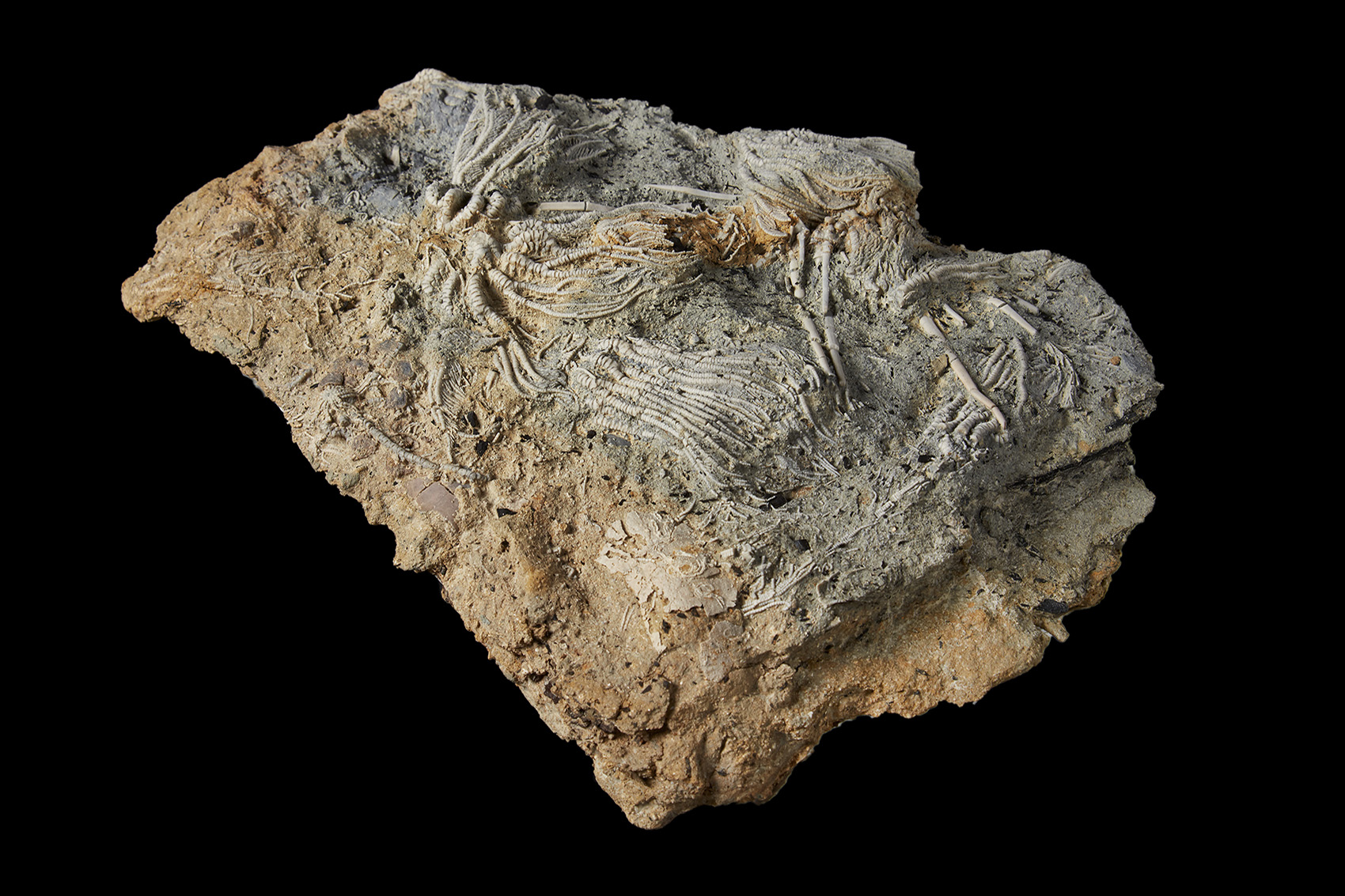
Researchers hope these fossils will reveal insights into the evolutionary development and diversification of these iconic and ecologically important echinoderms
What did these Jurassic creatures look like?
The group of animals found at the fossil dig are called echinoderms. This group contains sea urchins, starfish, crinoids, brittlestars, sea cucumbers and feather stars. These animals were evolving rapidly in the mid Jurassic. Their relatives are still alive today.
'These creatures look so familiar it's startling', says Tim.
The fossils that stand out the most in the limestone are those of feather stars and sea lilies. You can see their articulated, alien-like arms clearly in the rock.
These creepy-looking creatures move and feed in a remarkable way. Sea lilies have stalks that enable them to raise their feeding arms off the seabed so they can catch passing food particles. When they want to move, they change the hardness of their stalks, flop to the ground and use their arms to crawl to another spot.
Feather stars do not have the stalk and so they just walk on the seabed or swim using their arms.
Tim says that the feather stars were just starting to diversify during the mid Jurassic, having appeared only 30 million years earlier at the beginning of the Jurassic Period.
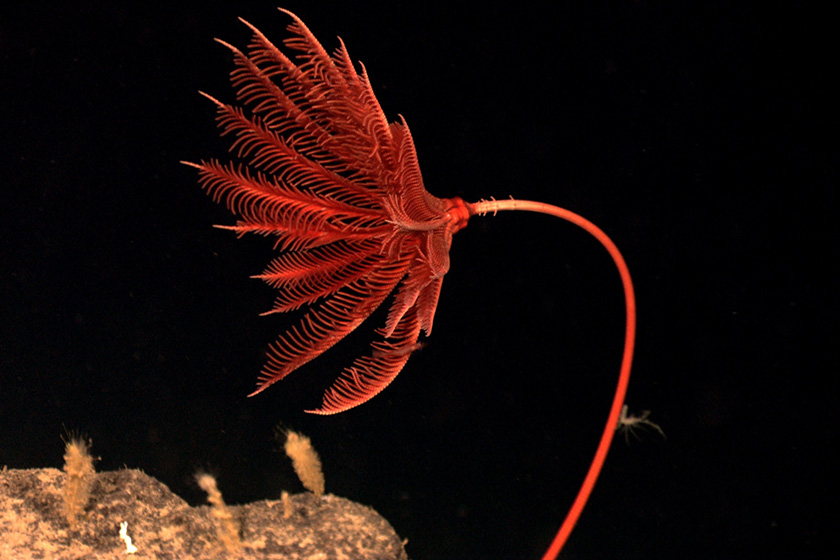
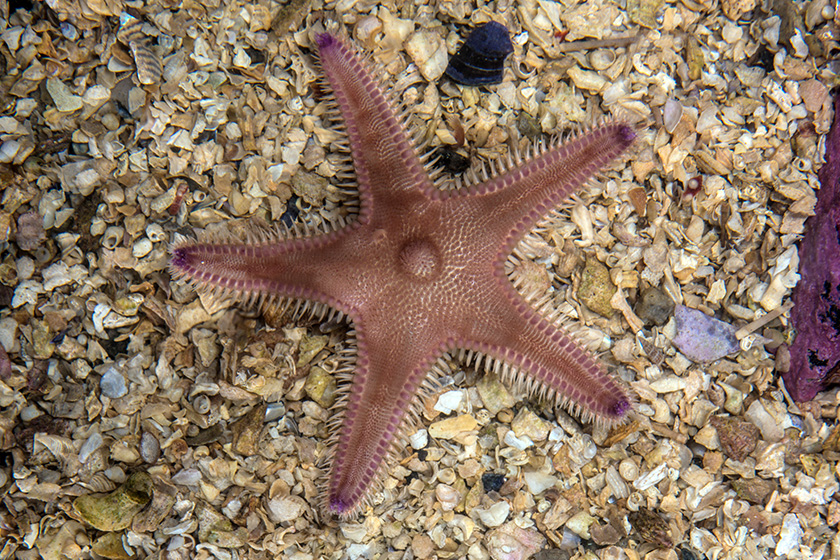
This starfish, Astropecten irregularis, lives submerged in sediment and they suck water through channels along the margin and toward the mouth on the underside. They are found in shallow marine environments predominantly along the west coast of the UK. Researchers found fossils like these at the Wiltshire site of a species called Pentasterias (Archastropecten) hastingsae. Image by Espen Rekdal (CC BY 4.0)
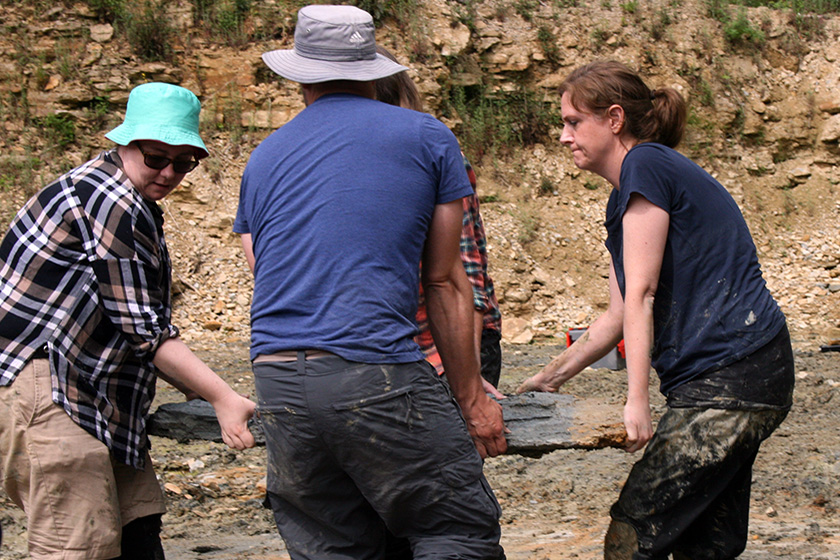
Lifting a limestone slab from the quarry
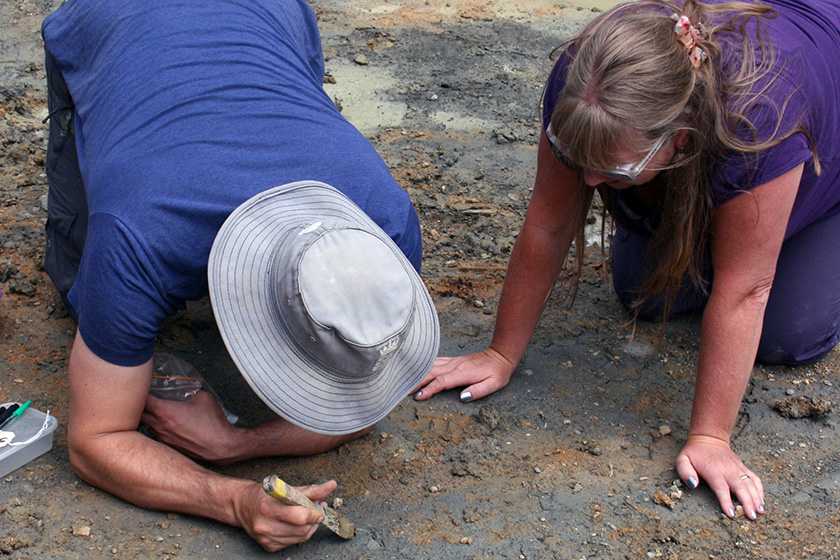
Dr Tim Ewin and Sally Hollingworth examine the quarry floor
An incredible discovery
Curators, researchers and palaeontologists spent a few days in the muddy quarry digging up the fossils.
The atmosphere on the dig was exciting. Everyone arrived at the quarry early in the morning and it wasn't long before someone had uncovered the first fossil.
They worked in specific areas of the quarry to extract the layers most likely to contain fossils.
The team were digging up a limestone layer at the base of the quarry and revealing the fossils on the underside of this layer. To lift the limestone, everyone patiently scraped mud away from the rock and then prised the rock from the quarry floor with metal tools.
There was also a team 'surface picking' - collecting fossils that have been washed out of the clay by the rain and left on the quarry floor. This was incredibly productive, and they had many interesting finds, including several rare starfish. The fossils were so plentiful that sometimes someone would reach into the mud and find a baby sea urchin or crinoid fossil.
There have been some small fossil fish found, but nothing of bigger vertebrates, except for a few crocodile teeth.
Neville and Sally Hollingworth are local palaeontologists who discovered the site.
After uncovering a small slab of fossils in the quarry, they soon realised just how remarkable the site was and contacted researchers at the Museum.
'When you start to get your eye in you see crinoids just jumping out of the rock at you, you can see complete heads just lying there in the clay', says Neville. 'We excavated a little bit, cleaning it up at home, and it was like drawing back a veil, it was beautiful and knew we had found something remarkable.
'These animals didn't even have time to get out. Even the sea urchins, who can get out of mud, were trapped. Everything died exactly where it was living.
'The quarry was being mined for rock, which they crushed, but fortunately, when they hit the clay layer they decided to stop, which is very lucky,' Neville adds.
Their knowledge and connection to the local area is fundamental to the success of the dig.
'Palaeontological science is not the preserve of academics, it is advanced by a huge range of people with their own expertise, and we are really grateful that we were involved in their discoveries' says Tim.
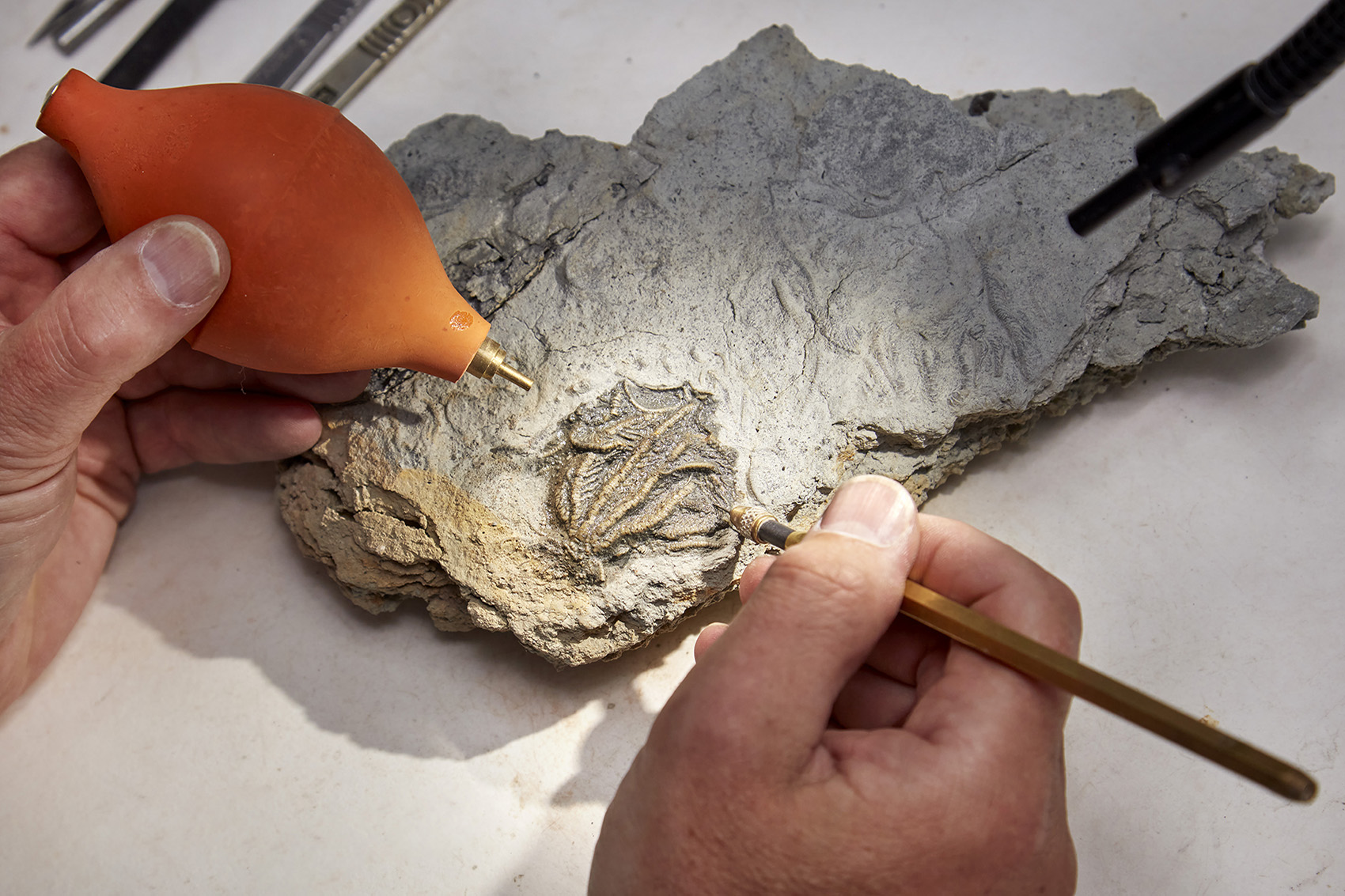
Senior Fossil Preparator at the Museum, Mark Graham, reveals a crinoid in the limestone
What will the fossils tell us?
The fossils they collected are now back in the Museum, where they will be carefully cleaned and studied.
Collaborating with researchers from around the world, Tim expects they will keep him busy for a couple of years and that they will hold many exciting discoveries, including insights into new species.
In addition to the animals, the pollen and wood found in the rocks might also tell us a story of climate changes at the time and the plant species richness.
'We'll describe in detail the new species and describe the variability of the plants and animals we have found at the site.
'There will be another project looking at the population dynamics of the particular echinoderm groups and what that tells us about their ecology.'
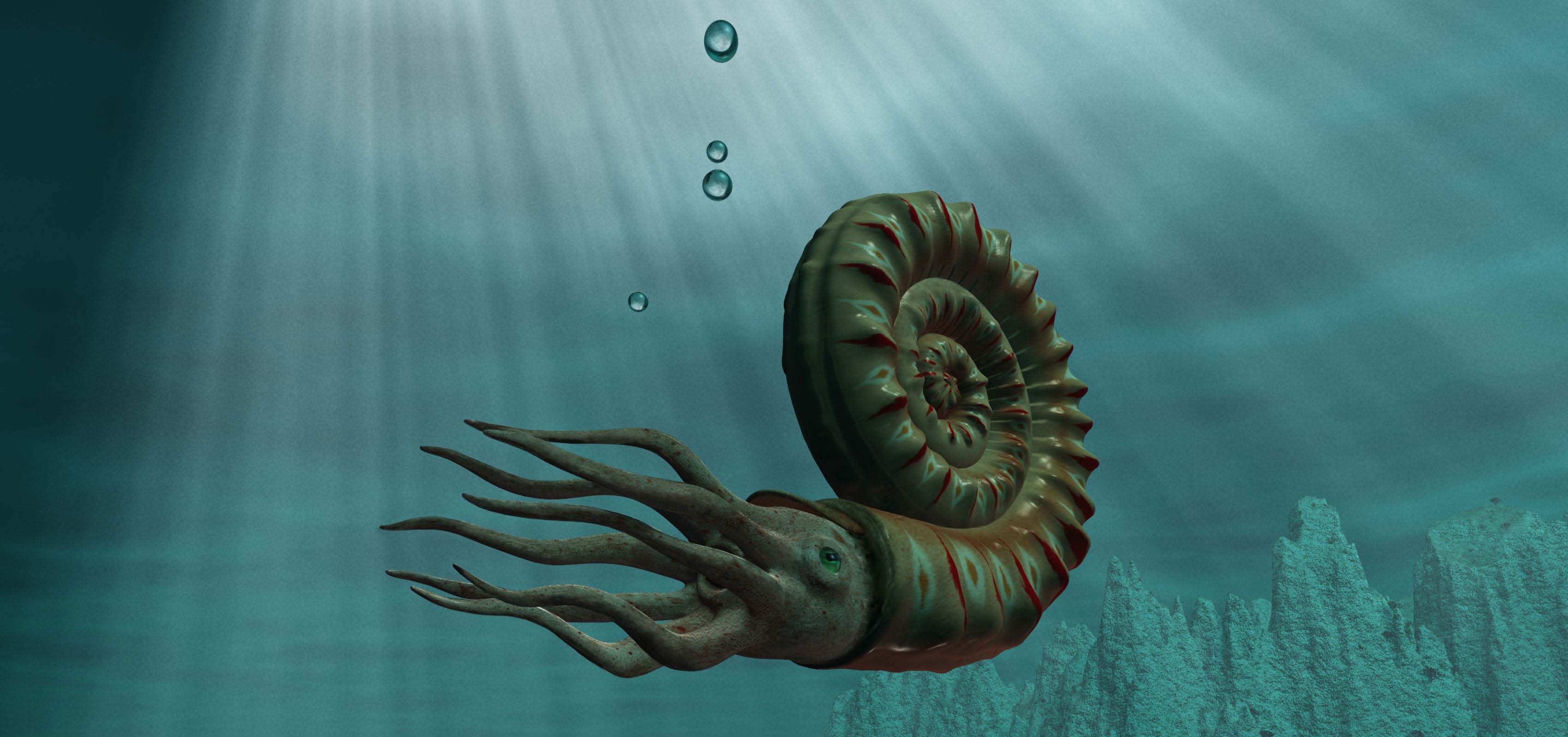
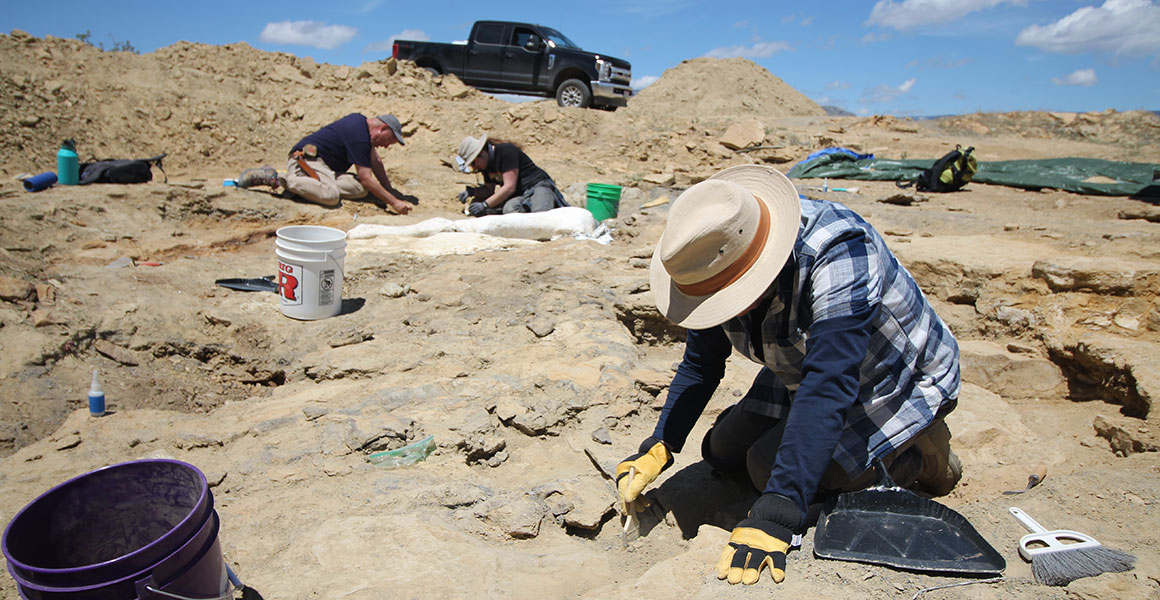
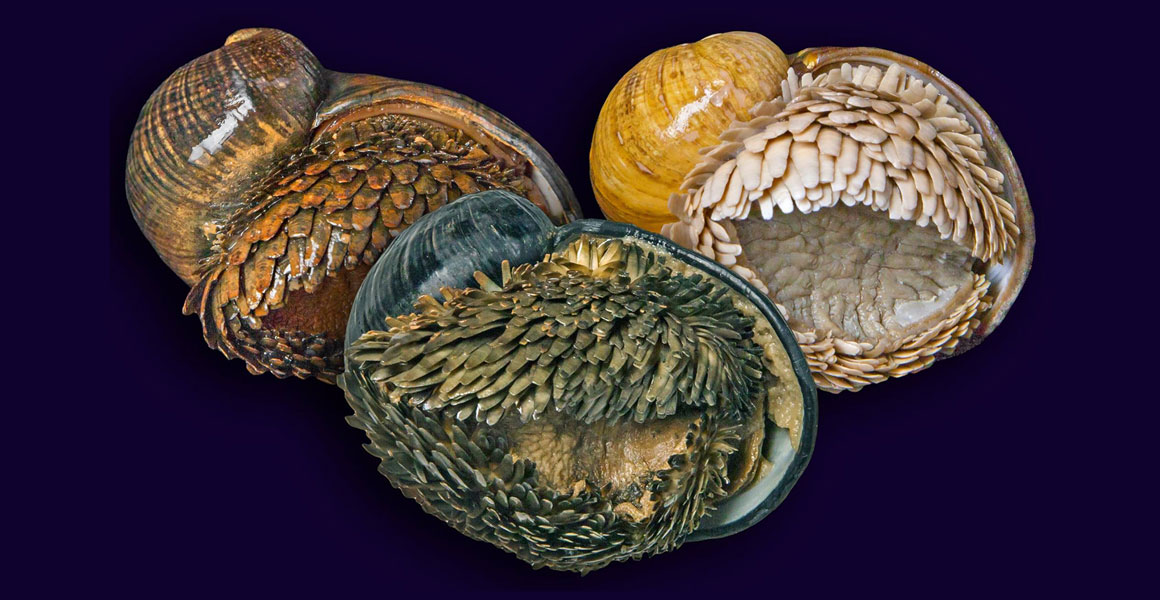
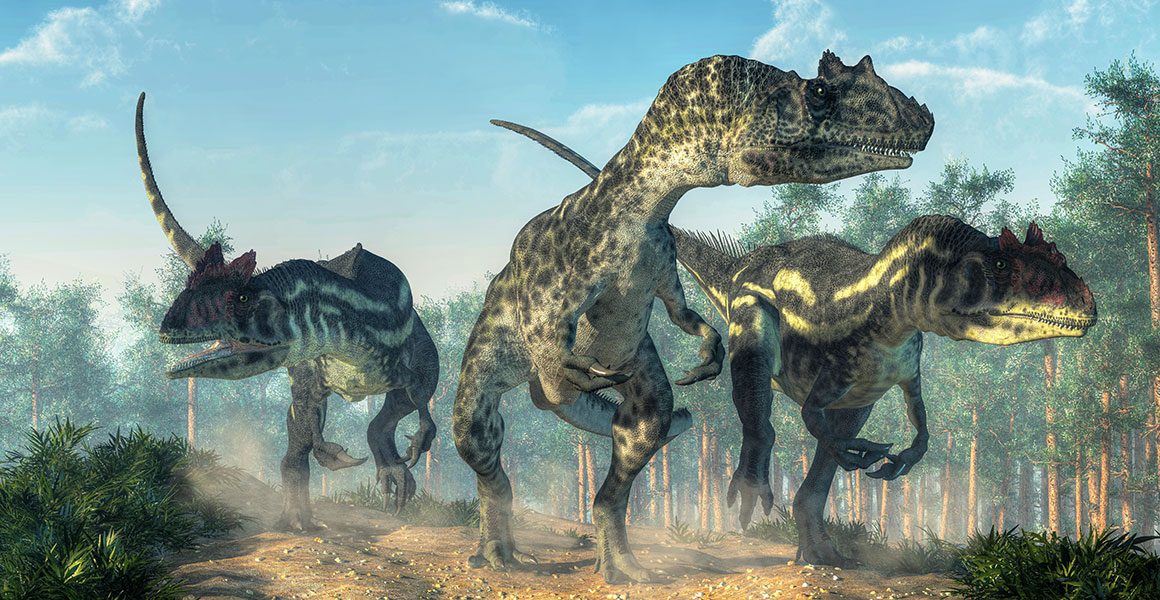
Don't miss a thing
Receive email updates about our news, science, exhibitions, events, products, services and fundraising activities. We may occasionally include third-party content from our corporate partners and other museums. We will not share your personal details with these third parties. You must be over the age of 13. Privacy notice.
Follow us on social media